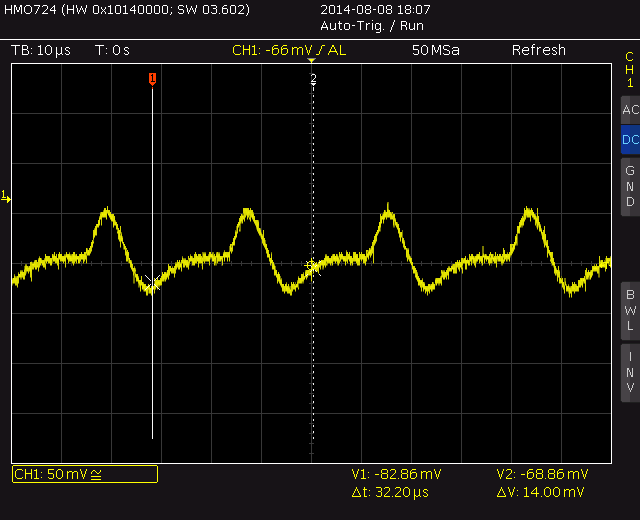I've got a little problem with a board I designed. What I tried to achieve is to control some LEDs with a microcontroller featuring an Arduino bootloader so that you can program it with the Arduino IDE.
As you can see on the picture, I've used an ATmega32U4, and flashed the Arduino Leonardo bootloader (Caterina-Leonardo) onto it, but it wasn't recognized as USB-device when I connected it to my PC (neither under Windows nor under Linux, nor was it recognized at all). Note that some caps between +5V and GND near the microcontroller as well as a cap between VBUS and GND are not shown on the picture but present on the board.

Flashing went without any problems, and the fuses were set just like another project featuring an ATmega32U4 I found on the Internet:

So when I measured D+ and D- of the USB-Socket, my oscilloscope showed the following:

So obviously something is not working right. By activating the CKOUT-fuse I was able to measure the clock on PIN7, so it seems that the chip does at least something. I then flashed a small example program onto it to set some pins to HIGH, but no matter what pins I choose I always get the following output:

Does anyone have any idea what is wrong or what I could do? I hope the chip is not dead after all. I also measured the +5V rail but it was very clean, much less noise than a "USB-5V".
I hope I didn't forget something important!
